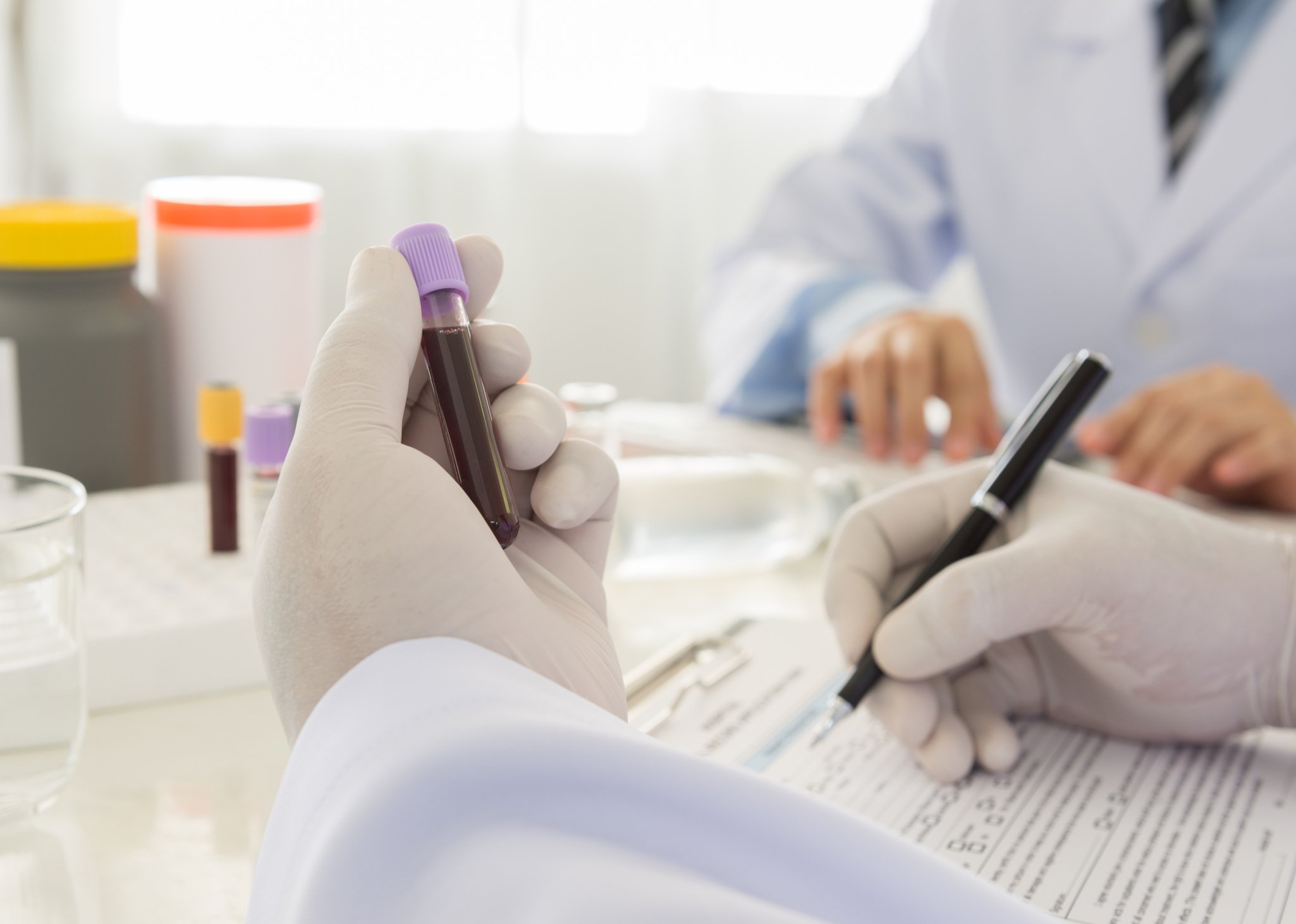
Image source: Getty Images.
According to the U.S. Food and Drug Administration, 22 new molecular entities wound up being approved in 2016. Mind you, this figure excludes approvals tied to label expansion opportunities and generic drugs that the regulatory body oversaw in 2016. Nonetheless, the 22 novel drugs approved last year marked a better than 50% decline from the number of novel drugs approved in 2015 by the FDA.
Plenty of game-changing therapies hit pharmacy shelves in 2016
Despite the drop-off in new medicines reaching pharmacy shelves, we still witnessed quite a few high-quality medicines hit the market. For instance, Roche (RHHBY 1.15%) wound up bringing its cancer immunotherapy Tecentriq to market following its approval in May. Cancer immunotherapies, which work to suppress the ability of cancer cells to hide and can kick-start a patient's immune system, are possibly the foundation of future cancer combination therapies.
Another impressive therapy that was brought to market is Sarepta Therapeutics' (SRPT +2.40%) Exondys 51, a treatment for exon 51-skipping Duchenne muscular dystrophy. Though it represented a very small subset of patients, a phase 2b-extended study involving Exondys 51 and a placebo demonstrated a marked benefit in the six-minute walk test for the Exondys arm. Prior to the approval of Exondys 51, DMD patients had no FDA-approved therapy to turn to, meaning there's new hope for children and teens suffering with this debilitating disease.
2016 also gave us our very first pan-genotypic hepatitis C drug with the approval of Gilead Sciences' (GILD +0.95%) Epclusa. While it's unlikely to unseat Harvoni as the popular genotype 1 drug (genotype 1 accounts for between 70% and 75% of all HCV cases), Epclusa can step in as a potentially superior therapy in all other genotypes (two through six).

Image source: Getty Images.
This drug launch was a disaster
However, not every drug launch went as planned in 2016. One therapy that was approved by the FDA in late Jan. 2016 was expected to bring in $2.2 billion in annual hepatitis C sales by 2017. But at the rate it's been growing its sales, this drug might be lucky to hit $800 million in sales by the end of 2017. Without question, the most disappointing drug launch of 2016 was that of Merck's (MRK +3.60%) hepatitis C doublet, Zepatier.
The initial launch of Zepatier was met with plenty of promise. In the clinical trials that led to its approval, Zepatier, which is targeted at genotypes 1 and 4, led to sustained virologic responses in 94% to 97% of genotype 1 patients and 97% to 100% of genotype 4 patients. What's more, Zepatier as a once-daily therapy was designed to finally give Gilead's once-daily HCV hero, Harvoni, a run for its money. The only other FDA-approved competition was Abbvie's Viekira Pak, and at the time that was a combination of therapies that needed to be taken daily.
Making Zepatier's launch even more promising was its aggressive pricing of the drug. For those who don't remember, Gilead Sciences was highly criticized for its pricing of both Sovaldi ($1,000 per pill, or $84,000 for a standard 12-week treatment at wholesale costs) and Harvoni ($1,125 per pill, or $94,500 for 12 weeks). Merck brought Zepatier to market with a wholesale price tag of $54,600, which is 42% below Harvoni's list price. There was the belief that Zepatier's price could lure some consumers and physicians away from Harvoni's genotype 1 monopoly.

Image source: Getty Images.
What went wrong?
But Merck's dreams of grandeur for its HCV drug quickly faded post-launch. During its partial first quarter, Merck wound up reporting sales of just $50 million for Zepatier. That was followed by $112 million in sales during the second quarter and $164 million in the third quarter. Assuming a steady progression, Zepatier may have surpassed the $500 million mark in full-year sales for 2016. However, it's on track to come nowhere near the lofty expectations of a drug that was expected to hold 11% HCV market share ($2.2 billion) by the end of 2017.
So what went wrong? To begin with, Harvoni still provides a more favorable safety profile than Zepatier. One of the primary drawbacks of Zepatier is that select patients are still required to take a ribavirin, which can come with a number of unpleasant side effects ranging from rashes to anemia. A ribavirin doesn't need to be taken with Harvoni, meaning it still has the preferable safety profile of the two.
Another big problem is that Zepatier failed to provide the differentiation needed to lure physicians and consumers away from Gilead's Harvoni. Even though Zepatier provided a very impressive sustained virologic response in clinical studies, it didn't do the most important thing: shorten the treatment process. One of the very few ways Gilead could potentially be unseated is if a new therapy reduced the treatment-naïve or standard treatment process from eight or 12 weeks down to four to six weeks. Zepatier simply didn't do that.

Image source: Getty Images.
Third, Zepatier ran into an unexpected brick wall of brand-drug loyalty. One of the prime advantages of bringing a drug to market before everyone else is that it allows the first-in-class drugmaker to forge a bond with physicians and consumers. In other words, Harvoni has worked so well that there's just not a reason for physicians or consumers to switch away from the time-tested brand-name drug in HCV, which is Harvoni.
Finally, Zepatier's pricing strategy backfired because it failed to represent the true gross-to-net discounting provided to insurers by drugmakers. On the surface, Zepatier's $54,600 price tag over 12 weeks seemed like a great deal in comparison to Harvoni. However, gross-to-net discounting for Harvoni has increased in recent quarters, which is one reason why sales of Gilead's key HCV products contracted a bit in 2016. While the actual gross-to-net discounting figures are often a closely guarded secret of drugmakers, it's quite plausible that Harvoni and Zepatier are actually priced very similarly when everything is taken into account.
Thankfully for Merck, Zepatier still has a shot at becoming a blockbuster drug ($1 billion+ in sales) at some point in the future given the sheer number of HCV patients globally who still need to be treated. But the grim reality is that it's probably not going to live up to its hype.
